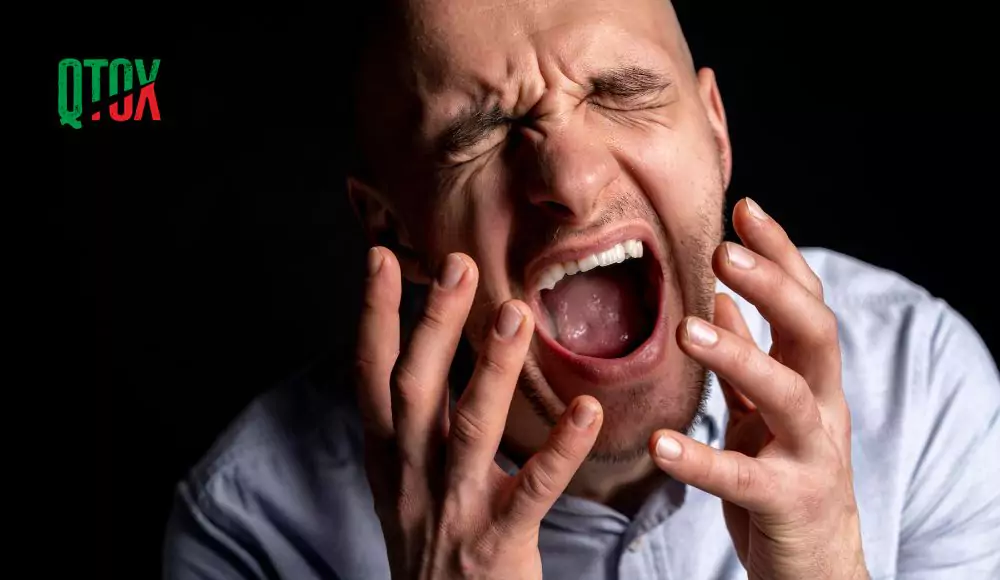
A Complete Overview on Chewing Tobacco EffectsChewing Tobacco Effects: the consequences? To get the answer to this question, read this blog carefully.
Chewing tobacco, also known as smokeless tobacco, has been used for centuries in various cultures. It is a harmful habit that has serious consequences for your health. Despite its widespread use, many people are unaware of the devastating effects it can have on the body.
This blog provides a comprehensive overview of the impacts of chewing tobacco on health, ranging from oral problems to systemic diseases.
Let’s delve into this.
Understanding Chewing Tobacco
Tobacco comes in several forms, including loose leaf, plug, and dip. It is made from shredded or crushed tobacco leaves mixed with flavorings, sweeteners, and other additives. Users place the tobacco between their gums and cheek or under their tongue, allowing nicotine and other chemicals to be absorbed through the mucous membranes.
Chewing tobacco contains at least 28 cancer-causing chemicals, known as carcinogens. The primary carcinogens are tobacco-specific nitrosamines (TSNAs), but other harmful substances include formaldehyde, acetaldehyde, arsenic, benzopyrene, nickel, and cadmium.
Nicotine, which causes addiction, is present in chewing tobacco. While it is absorbed more slowly from chewing tobacco compared to cigarettes, it is absorbed 3 to 4 times more than from a cigarette, and it stays in the bloodstream longer.
What are the Chewing Tobacco Effects?
There are several significant chewing tobacco effects on health. Let’s have a look:
Risky Oral Health Impacts
One of the most immediate and visible chewing tobacco effects is on oral health.
Gum Disease and Recession:
Chewing tobacco can lead to severe gum disease. The chemicals present in the tobacco irritate the gums, leading to inflammation, bleeding, and gum recession. Over time, this can result in the loss of gum tissue and teeth.
Leukoplakia:
Leukoplakia is a condition characterized by white patches inside the mouth, which can be precursors to cancer. These patches are caused by the constant irritation of tobacco on the oral mucosa. This can be a warning sign of oral cancer and requires medical supervision.
Tooth Decay and Staining:
The sugar and additives in chewing tobacco contribute to tooth decay. Additionally, the tobacco can stain teeth, leading to unsightly discoloration and compromising overall dental aesthetics.
Oral Cancer:
The major chewing tobacco effects is the factor of oral cancer. The carcinogens in tobacco can cause mutations in the cells of the mouth, throat, and esophagus, leading to cancer. The risk increases with the duration and intensity of tobacco use. Oral cancers can be life-threatening and may require extensive treatments, including surgery, radiation, or chemotherapy.
Pancreatic Cancer
Research indicates that smokeless or chewing tobacco use is also linked to a higher risk of esophageal and pancreatic cancers. The carcinogens in tobacco are absorbed into the bloodstream and can affect other parts of the digestive tract, increasing cancer risk.
Cardiovascular Diseases
Nicotine and other chemicals present in chewing tobacco can contribute to cardiovascular issues. They can increase heart rate and blood pressure, leading to an elevated risk of heart disease and stroke.
Long-term use of Gutkha or other tobacco elements can exacerbate these risks and contribute to overall cardiovascular health deterioration.
How Does Chewing Tobacco Do to Your Body?
Chewing tobacco effects can lead to various cancers, such as those of the mouth, tongue, gums, stomach, esophagus (throat), and bladder. Frequent users might also observe their teeth becoming worn down and stained due to the tobacco, which can lead to gum recession.
Consistent chewing tobacco is also linked to an increased risk of heart attacks, as it is known to elevate blood pressure and cholesterol levels.
How Long Does Chewing Tobacco Stay in Your System?
Chewing tobacco effects can remain last long. Nicotine will be eliminated from your blood within 1 to 3 days after you stop chewing tobacco, and cotinine will clear out within 1 to 10 days. Both nicotine and cotinine will not be detectable in your urine 3 to 4 days after quitting tobacco products.
How to Stop Chewing Gutkha?
Like smoking cigarettes, chewing tobacco is highly addictive. But don’t worry! It is possible to quit. People who stop chewing tobacco find it helpful to substitute it with some healthier alternatives. If you want to stop chewing Gutkha, you can easily go for sunflower seeds, beef jerky or chewing gum to avoid this bad habit. These options can help you occupy the mount and distract you from cravings.
Additionally, healthcare professionals and public health officials urge parents to discuss the risky chewing tobacco effects with their teenage children.
What Are the Treatment Available for People Planning to Quit Chewing Tobacco?
Chewing tobacco is an addictive habit that can be overcome. Similar to cigarette smoking, there are various support systems, programs, and prescription medications available to assist individuals in quitting chewing tobacco.
For heavy users, Nicotine Replacement Therapy (NRT) might be useful in managing cravings and easing withdrawal symptoms. NRT products, such as nicotine patches, gum, lozenges, inhalers, and sprays, offer a purer form of nicotine without the harmful and cancer-causing chemicals found in chewing tobacco.
Additionally, prescription medications such as bupropion SR (e.g., Zyban and Wellbutrin SR) and Varenicline Tartrate (e.g., Chantix), have been proven effective for some individuals trying to quit nicotine.
The Bottom Line
So, there is no surprise that the Chewing tobacco effect poses serious health risks, including various cancers, gum disease, and heart issues. It leads to nicotine addiction, stained teeth, and social stigma.
Quitting chewing tobacco can significantly improve your health and well-being. Here at Qtox, we provide consultation plans and lung, oral detox products that help you to kick out this bad habit.
Let’s live a healthier and happy life by quitting chewing tobacco.
Chewing Tobacco Effects: the consequences? To get the answer to this question, read this blog carefully.
Chewing tobacco, also known as smokeless tobacco, has been used for centuries in various cultures. It is a harmful habit that has serious consequences for your health. Despite its widespread use, many people are unaware of the devastating effects it can have on the body.
This blog provides a comprehensive overview of the impacts of chewing tobacco on health, ranging from oral problems to systemic diseases.
Let’s delve into this.
Understanding Chewing Tobacco
Tobacco comes in several forms, including loose leaf, plug, and dip. It is made from shredded or crushed tobacco leaves mixed with flavorings, sweeteners, and other additives. Users place the tobacco between their gums and cheek or under their tongue, allowing nicotine and other chemicals to be absorbed through the mucous membranes.
Chewing tobacco contains at least 28 cancer-causing chemicals, known as carcinogens. The primary carcinogens are tobacco-specific nitrosamines (TSNAs), but other harmful substances include formaldehyde, acetaldehyde, arsenic, benzopyrene, nickel, and cadmium.
Nicotine, which causes addiction, is present in chewing tobacco. While it is absorbed more slowly from chewing tobacco compared to cigarettes, it is absorbed 3 to 4 times more than from a cigarette, and it stays in the bloodstream longer.
What are the Chewing Tobacco Effects?
There are several significant chewing tobacco effects on health. Let’s have a look:
Risky Oral Health Impacts
One of the most immediate and visible chewing tobacco effects is on oral health.
Gum Disease and Recession:
Chewing tobacco can lead to severe gum disease. The chemicals present in the tobacco irritate the gums, leading to inflammation, bleeding, and gum recession. Over time, this can result in the loss of gum tissue and teeth.
Leukoplakia:
Leukoplakia is a condition characterized by white patches inside the mouth, which can be precursors to cancer. These patches are caused by the constant irritation of tobacco on the oral mucosa. This can be a warning sign of oral cancer and requires medical supervision.
Tooth Decay and Staining:
The sugar and additives in chewing tobacco contribute to tooth decay. Additionally, the tobacco can stain teeth, leading to unsightly discoloration and compromising overall dental aesthetics.
Oral Cancer:
The major chewing tobacco effects is the factor of oral cancer. The carcinogens in tobacco can cause mutations in the cells of the mouth, throat, and esophagus, leading to cancer. The risk increases with the duration and intensity of tobacco use. Oral cancers can be life-threatening and may require extensive treatments, including surgery, radiation, or chemotherapy.
Pancreatic Cancer
Research indicates that smokeless or chewing tobacco use is also linked to a higher risk of esophageal and pancreatic cancers. The carcinogens in tobacco are absorbed into the bloodstream and can affect other parts of the digestive tract, increasing cancer risk.
Cardiovascular Diseases
Nicotine and other chemicals present in chewing tobacco can contribute to cardiovascular issues. They can increase heart rate and blood pressure, leading to an elevated risk of heart disease and stroke.
Long-term use of Gutkha or other tobacco elements can exacerbate these risks and contribute to overall cardiovascular health deterioration.
How Does Chewing Tobacco Do to Your Body?
Chewing tobacco effects can lead to various cancers, such as those of the mouth, tongue, gums, stomach, esophagus (throat), and bladder. Frequent users might also observe their teeth becoming worn down and stained due to the tobacco, which can lead to gum recession.
Consistent chewing tobacco is also linked to an increased risk of heart attacks, as it is known to elevate blood pressure and cholesterol levels.
How Long Does Chewing Tobacco Stay in Your System?
Chewing tobacco effects can remain last long. Nicotine will be eliminated from your blood within 1 to 3 days after you stop chewing tobacco, and cotinine will clear out within 1 to 10 days. Both nicotine and cotinine will not be detectable in your urine 3 to 4 days after quitting tobacco products.
How to Stop Chewing Gutkha?
Like smoking cigarettes, chewing tobacco is highly addictive. But don’t worry! It is possible to quit. People who stop chewing tobacco find it helpful to substitute it with some healthier alternatives. If you want to stop chewing Gutkha, you can easily go for sunflower seeds, beef jerky or chewing gum to avoid this bad habit. These options can help you occupy the mount and distract you from cravings.
Additionally, healthcare professionals and public health officials urge parents to discuss the risky chewing tobacco effects with their teenage children.
What Are the Treatment Available for People Planning to Quit Chewing Tobacco?
Chewing tobacco is an addictive habit that can be overcome. Similar to cigarette smoking, there are various support systems, programs, and prescription medications available to assist individuals in quitting chewing tobacco.
For heavy users, Nicotine Replacement Therapy (NRT) might be useful in managing cravings and easing withdrawal symptoms. NRT products, such as nicotine patches, gum, lozenges, inhalers, and sprays, offer a purer form of nicotine without the harmful and cancer-causing chemicals found in chewing tobacco.
Additionally, prescription medications such as bupropion SR (e.g., Zyban and Wellbutrin SR) and Varenicline Tartrate (e.g., Chantix), have been proven effective for some individuals trying to quit nicotine.
The Bottom Line
So, there is no surprise that the Chewing tobacco effect poses serious health risks, including various cancers, gum disease, and heart issues. It leads to nicotine addiction, stained teeth, and social stigma.
Quitting chewing tobacco can significantly improve your health and well-being. Here at Qtox, we provide consultation plans and lung, oral detox products that help you to kick out this bad habit.
Let’s live a healthier and happy life by quitting chewing tobacco.
